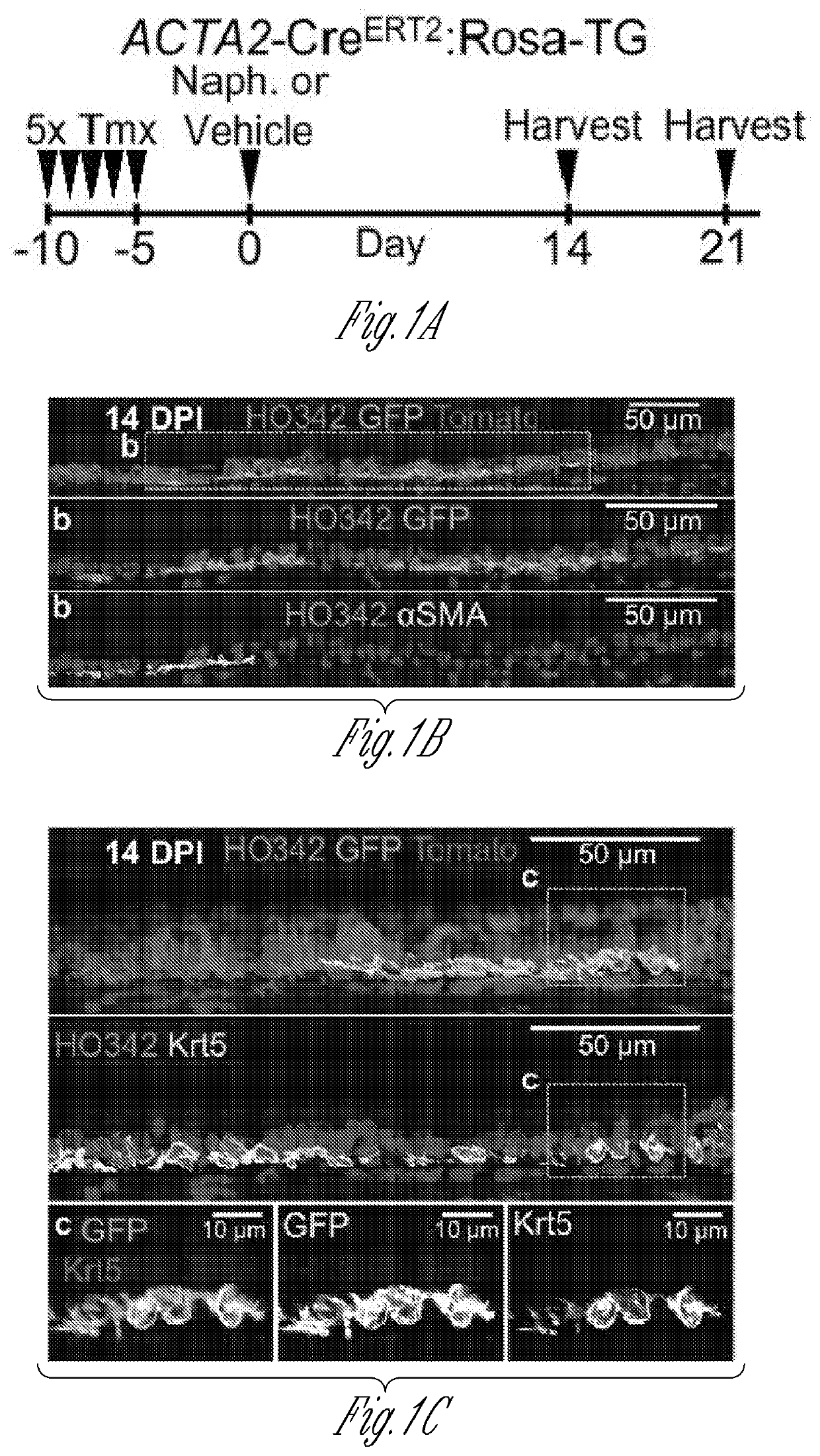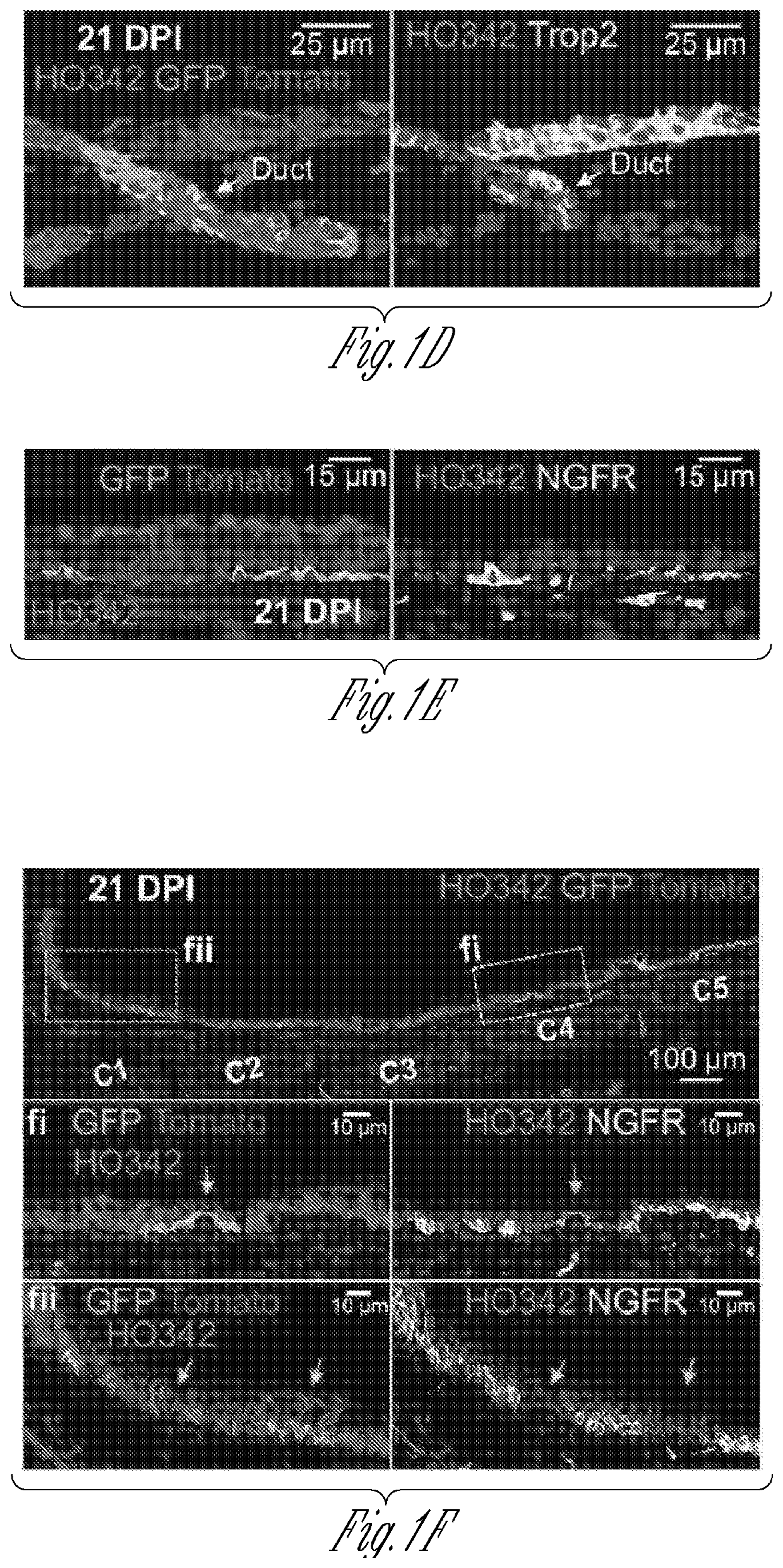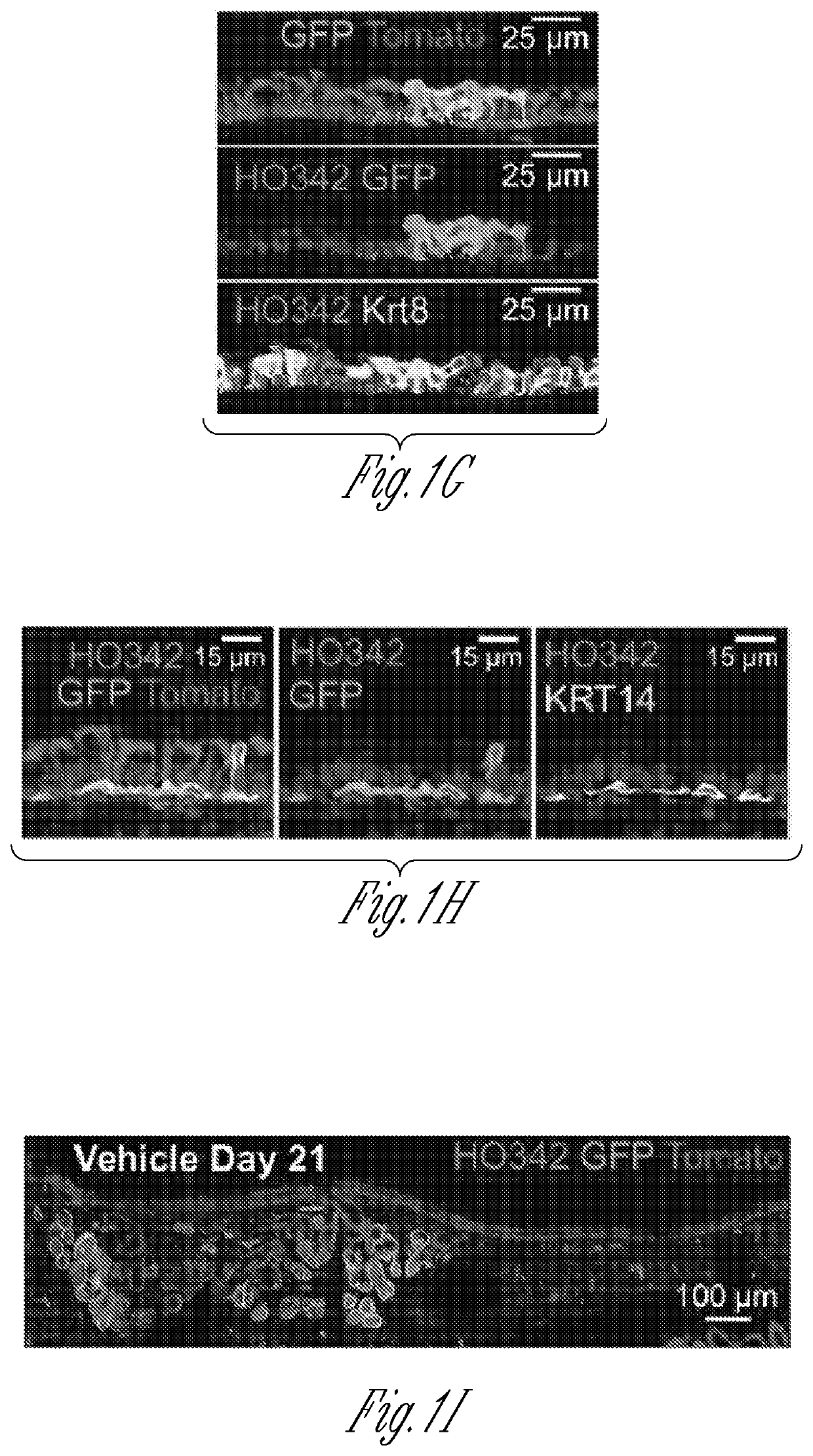Inductive regeneration of the airway by transcriptional factor modulation of glandular myoepithelial stem cells
a transcription factor and stem cell technology, applied in the field of inductive regeneration of the airway by transcription factor modulation of glandular myoepithelial stem cells, can solve the problems of inability to understand the processes that regulate the self-renewal, survival and differentiation of scs in different organs, and the sae remains unclear if lineage-traced basal cells are indeed reestablished. , to achieve the effect of enhancing airway repair and inducing m
- Summary
- Abstract
- Description
- Claims
- Application Information
AI Technical Summary
Benefits of technology
Problems solved by technology
Method used
Image
Examples
example 1
Summary
[0120]The mouse trachea is thought to contain two distinct stem cell compartments that contribute to airway repair-basal cells in the surface airway epithelium (SAE) and an unknown submucosal gland (SMG) cell type. Whether a lineage relationship exists between these two stem cell compartments remains unclear. Using lineage tracing of glandular myoepithelial cells (MECs), we demonstrate that MECs can give rise to seven cell types of the SAE and SMGs following severe airway injury. MECs progressively adopted a basal cell phenotype on the SAE and established lasting progenitors capable of further regeneration following reinjury. MECs activate Wnt-regulated transcription factors (Lef-1 / TCF7) following injury and Lef-1 induction in cultured MECs promoted transition to a basal phenotype. Surprisingly, dose-dependent MEC conditional activation of Lef-1 in vivo promoted self-limited airway regeneration in the absence of injury. Thus, modulating the Lef-1 transcriptional program in ME...
example 2
[0173]Glandular myoepithelial cells (MECs) function as multipotent progenitors for 7 cell types within the surface airway epithelium (SAE) and SMGs. Furthermore, MECs have the ability to form SMGs de novo in denuded xenografts, and are the first airway stem cells known to have this functional attribute. Also central to this proposal is the finding that the Lef-1 transcription factor controls both the lineage commitment of MECs and their ability to migrate to the SAE, where they undergo directed dedifferentiation into multipotent basal cells (BCs). The proposed research will capitalize on this biology to facilitate the development of CF stem cell-based therapies. As disclosed herein below, Lef-1 expression in MECs altered the expression of genes that direct lineage commitment, proliferation, and rapid migration from glands to the airway surface. The central therapeutic hypothesis is that the unique cell-intrinsic properties of MECs can be harnessed to improve stem cell-based therapie...
example 3
[0185]FIG. 29 shows expression of Lef1 in MECs induces ionocyte differentiation. Ionocytes are the top Cftr expressing cells in the airways (Montoro et al., 2018; Plasschaert et al., 2018). Since the ionocytes express Cftr at an extremely high levels, replenishing ionocyte will be highly beneficial to CF patients and for airway regeneration after airway injuries. The present method generates ionocytes which can be used as a cell based therapy, e.g., for CF patients.
PUM
| Property | Measurement | Unit |
|---|---|---|
| Fluorescence | aaaaa | aaaaa |
Abstract
Description
Claims
Application Information
 Login to View More
Login to View More - R&D
- Intellectual Property
- Life Sciences
- Materials
- Tech Scout
- Unparalleled Data Quality
- Higher Quality Content
- 60% Fewer Hallucinations
Browse by: Latest US Patents, China's latest patents, Technical Efficacy Thesaurus, Application Domain, Technology Topic, Popular Technical Reports.
© 2025 PatSnap. All rights reserved.Legal|Privacy policy|Modern Slavery Act Transparency Statement|Sitemap|About US| Contact US: help@patsnap.com



